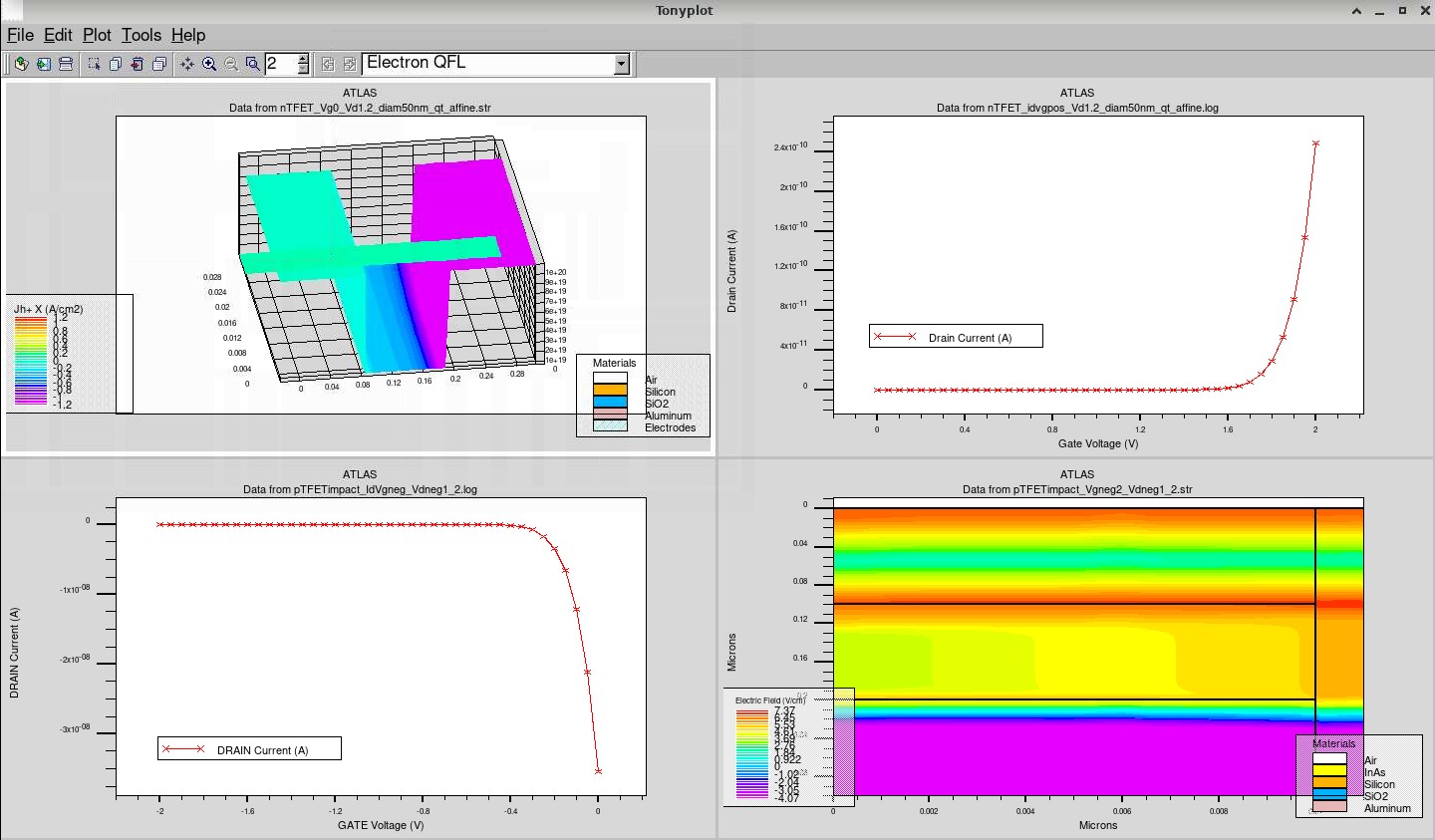- Share
- Share on Facebook
- Share on X
- Share on LinkedIn
TCAD (Technology Computer Aided Design) is a branch of electronic CAD using simulation tools to model fabrication (« process TCAD ») or operation (« device TCAD ») of micro- and nano-electronic devices prior to production.
As part of a partnership with the CEA-LETI, the LTM uses device TCAD tools developed by an American company: Silvaco.
These simulation tools help to understand and apprehend physical mechanisms occurring in microelectronic devices.
To be efficient, these tools must provide very reliable and precise results, which can be easily used, while allowing a very wide range of physical phenomena to be simulated, and requiring reasonable calculation times.
Figure 1 shows an example of TCAD simulation. Fig. 1: Example of TCAD simulation: simulation code (upper figs.), spatial distribution of valence band energy in the device (lower left) and drain current as function of gate voltage (lower right)
Fig. 1: Example of TCAD simulation: simulation code (upper figs.), spatial distribution of valence band energy in the device (lower left) and drain current as function of gate voltage (lower right)
Silvaco company, recognized for the quality of its products, is the second largest supplier of TCAD software in the world. The main Silvaco tools used at LTM are: Atlas, Deckbuild, Tonyplot and Victory Device.
In microelectronics, TCAD can be used for two kinds of work:
-the manufacturing of devices, commonly called Process-TCAD
-the operation of the devices, called Device-TCAD
Device-TCAD, used at LTM, is based on the one hand on a geometric (architecture, dimensions, finite element mesh) and physical (materials, doping, electrical contacts) definition of the device, and on the other hand on a library of physical models (mobility, carrier statistics, recombination, ionization, network heating, quantum models, tunnel effect, etc.) offered by the simulation tool.
TCAD offers several advantages to its users:
-a detailed and rapid understanding of the physical phenomena underlying the running of the device,
-optimization of the physical characteristics of the component before its experimental production, making it possible to guide certain choices quickly and efficiently, while considering relatively complex devices,
-time and budgetary saving, by carrying out operating tests of components not experimentally but numerically, even if it has a particular architecture and integrates relatively complex physical phenomena.
An example is shown on figure 2.

Fig. 2: Cross-sections views showing potential level, and net doping value inside transistors
To build a TCAD program, the following steps have to be performed:
-definition of the physical and geometric parameters of the device
-geometric and possibly quantum meshing of the device
-physical definition of every device region or electrode
-definition of doping in these regions
-selection of the physical and mathematical models needed to perform the simulation
-iterations of every electrode voltage level
Further simulation results are shown on figure 3.

Fig. 3: hole current density (upper left), Id(Vg) curves for nTFET (upper right) and pTFET (lower left), and electric field level (lower right) in a pTFET
Then the program is executed by the simulation tool, which firstly geometrically meshes the whole device and then considers local phenomena. It allows the tool to solve locally several physical equations, for each mesh, while taking into account all physical conditions of the device. Then, the tool compiles all the local results, in order to get a global result of the device physical state.
These operations can be repeated for many voltage levels, by incrementing them step by step in iterative form and by geometrically considering the interactions from mesh to mesh.
In this way realistic results over a given voltage range can be obtained.
The results can then be represented in different forms:
-curves of electrical I(V) and C(V) responses
-maps of physical quantities internal to the component (electric field, carrier densities, band diagram, etc.).
These results are then analyzed with researchers or students to understand certain phenomena or to guide their experimental work.
- Share
- Share on Facebook
- Share on X
- Share on LinkedIn